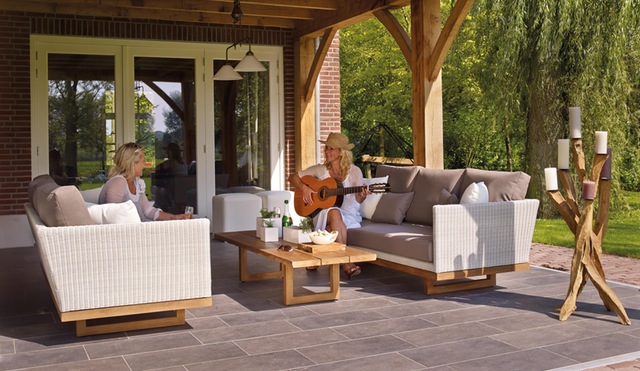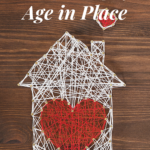 Research suggests that approximately 90% of seniors want to stay in their own homes as they age (1).
Research suggests that approximately 90% of seniors want to stay in their own homes as they age (1).
Being able to do so can often be good for a senior’s physical and mental health and may also allow them to remain in closer contact with friends and family members.
This general concept is known as aging in place and many policies and programs focus on finding ways to support the process.
Yet, aging in place can also be challenging.
In particular, seniors may face a large number of issues, especially those related to health or disability. For example, roughly 92% of seniors have at least 1 chronic disease, while 77% have 2 or more (2).
Seniors are also at risk for a range of other issues, including falls, social isolation, lack of transportation and discrimination.
As a result, families often need to find ways to support their family member living at home. Doing so may being an active caregiver, either part-time or full-time. However, there are also other relevant approaches and these may be used in conjunction with caregiving or as an alternative.
At Kapok, we’re focusing on providing detailed information about these different areas and how you can actively support the process of aging in place. Many of these ideas make the home environment safer for seniors and may also serve to increase their independence.
Every person and family is different and their needs vary as well.
Because of this, some of these areas may be more relevant to you than others.
However, they are topics worth considering. After all, even small changes can potentially make the home environment much safer and more sustainable for seniors.
Likewise, many approaches may serve to reduce the burden on caregivers and on families.
Tools for Inside the Home
 The nature of aging in place means that many of the changes that you will make tend to be within the home, with the goal of making the home safe. Many of these changes may be focused on reducing the risk of falls or helping the senior to move around easier.
The nature of aging in place means that many of the changes that you will make tend to be within the home, with the goal of making the home safe. Many of these changes may be focused on reducing the risk of falls or helping the senior to move around easier.
Alternatively, tools could be based on specific challenges, such as medication management.
Some of the various tools and options include the following:
- Devices for medication management
- Apps for medication management
- Indoor mobility aids
- Products for urinary incontinence
- Grab bars within the home
- Transfer benches
- Non-slip mats
- Dressing products (e.g. sticks, sock-aids, and shoe horns)
- Reaching items
At the same time, you also need to be careful when choosing products for the home.
Often some models may be a better choice than others. You may also find that you have to take additional factors into account that you wouldn’t either.
Some examples of this include:
- Space heaters
- Air conditioners
- Utensils, plates, and similar items
- Lights
Finally, you may also look for specific tools or options to make life more enjoyable for the senior and yourself.
One example of this is music. Music tends to have a strong emotional impact, especially because it plays such a major role in our lives. When it comes to caregiving, music is often overlooked, yet, it can be a powerful tool and can help with caregiving.
There are also other approaches and techniques that you can use, such as:
- Tablet apps for seniors
- Suitable cellphones or tablets
- Games for seniors
- Activities outside the home
Changes to Behavior and Routine
 Sometimes, the changes that need to be made aren’t physical in nature.
Sometimes, the changes that need to be made aren’t physical in nature.
Instead, they may involve significant or subtle alterations to the way that you approach situations or the things that you choose to say or avoid.
This is particularly true during the holidays, as the festive season tends to stir up strong emotions for many people. Likewise, it is also a time where routines and expectations tend to change.
For example, you often need to make special considerations if caring for somebody with dementia in the holidays. Indeed, dementia caregiving comes with its own unique challenges and you will often find that you sometimes need to accept the reality that the senior experiences or employ specific strategies for conversation.
Other changes to make or areas to consider include the following
- Cutting down expenses (including medication cost)
- Getting a doctor to come to the house
- Considering when the senior should stop driving
- Helping the senior to lose weight
- Learning acceptance
- Making sure you care for your own needs
- Recognizing signs of depression and memory loss
- Finding ways to promote healthy sleep
Tools for Outside the Home
 In most cases, aging in the home involves making changes to the house and also to routines. But, there are also tools and approaches that are relevant outside of the home environment.
In most cases, aging in the home involves making changes to the house and also to routines. But, there are also tools and approaches that are relevant outside of the home environment.
These can often be just as critical, if not more so, than changes that occur within the home.
For example, seniors with dementia will sometimes wander and may become lost or confused. One solution to this is a GPS unit in the car. However, this only works if the senior is still driving and if they remain in the vehicle.
As a result, some people turn to personal GPS units instead.
There are many examples of such units and they vary in terms of precisely how they work and where they are worn.
This type of device can often seem expensive, especially as you typically have to pay for a service to actively monitor. However, the peace of mind tends to be worth it.
In particular, many of these devices allow you to actively track the senior’s movement using a smartphone or computer. Likewise, most will let you receive alerts when the senior wanders outside of a specific area.
Other important areas to consider include the following:
- Mobility devices, including canes, walkers, and scooters
- Transport solutions
- Voice recorders
- Car leverage bars
Refining and Developing Our Support
As time goes on, we aim to add to these lists and provide more detailed information about how to resolve the many challenges that are connected with caregiving. But, in the meantime, please do leave us a comment or send an email if there are specific areas that you would like covered.
The reality is that aging in place is a large field, as is caregiving itself.
Likewise, individual situations and people vary in what topics are most relevant. As a result, it would probably never be possible to cover every relevant area.
But, through research and feedback, we hope to highlight the most important concepts and provide both support and direction, regardless of your individual situation.


Leave a Reply